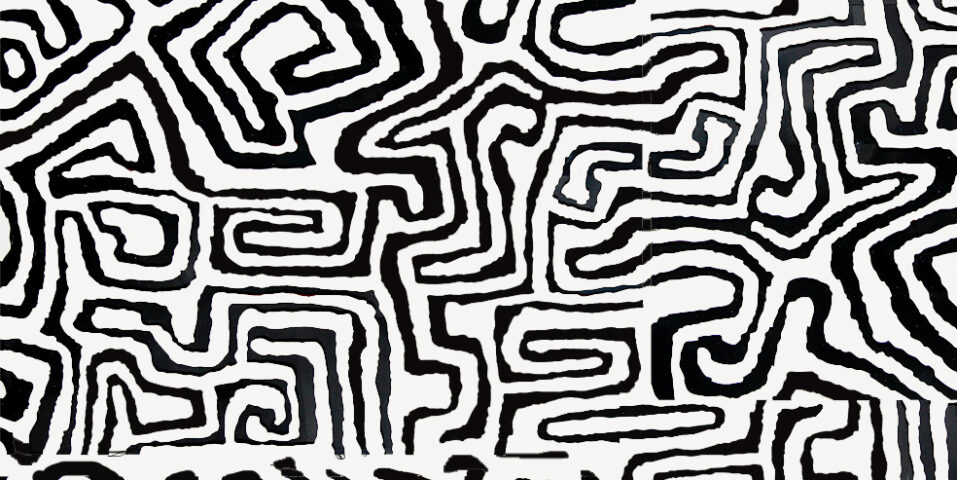Indigenous Art, an integral element of AFTRS
When AFTRS was slated to relocate its Sydney campus from North Ryde to Moore Park, the decision was made to incorporate an Indigenous artwork into the fabric of the building.
Hetti Perkins, the Senior Curator Aboriginal and Torres Strait Islander Arts, at the Art Gallery of New South Wales, at the time, took on the challenge of finding an artwork for a ‘supersized’ external wall. In 2006, Hetti said,
“AFTRS is charged with a mission to foster the creation of national stories through screen and broadcast productions – which are a significant vehicle for cultural expression. As a national institution AFTRS’ decision to choose to incorporate ‘another voice’ and mode of narrative, via the commissioning of an Indigenous artwork that will be located in a public context, is very significant.”
Today, in Gadigal country – the Indigenous name for the area where the School is located – there are still many connections to an ancient and Indigenous past.
Positioning contemporary Indigenous art into the heart of the screen arts and broadcast precinct connects contemporary storytelling to that past.
About the Artwork
Tjamu Tjamu 2009 depicts the birthplace of artist Kurltjunyintja Giles Tjapaltjarri in the Gibson Desert, near the West Australian border within the Northern Territory.
At this rock hole a group of ancestral women camped with one wati (man) after whom this site is named. He was the kangaroo ancestor and the women were his relatives under customary law. The wati travelled from the north and called the women to come and camp with him.
The women resisted his advances preferring to call him tjamu tjamu (grandfather, grandson). The ancestor then continued his travels to Tjutlpi, Witunkuntja, Wirti, Makarra, Millmillpa and Kurryl. This is the artist’s Tjukurrpa (ancestral stories) and the artwork represents the cultural significance of his country.
About the Artist
Kurltjunyintja (Jackie) Giles Tjapaltjarri – ‘the old man who painted’ – lived a traditional life in the Gibson Desert before visiting the Warburton Mission in Western Australia.
As a Maparnjarra (traditional healer) Mr Giles traveled extensively and his knowledge and authority was widely respected in the Western Desert and beyond. Mr Giles was a founding member of Kayili Artists, a community owned enterprise in Patjarr (Karilwara).
The paintings of the Kayili Artists describe the intricate network of Tjukurrpa that feature in the landscape and the creative journeys of the Tingarri (ancestral men and women).
Mr Giles based his concept for Tjamu Tjamu (2009) on a painting of the same name in the collection of the National Gallery of Victoria, Melbourne. The installation reflects the immense scale of the artist’s country and draws on traditional Western Desert symbolism.
‘The old man who painted’ passed away in February 2010, just six months after the launch of the supersized, Tjamu Tjamu artwall.
